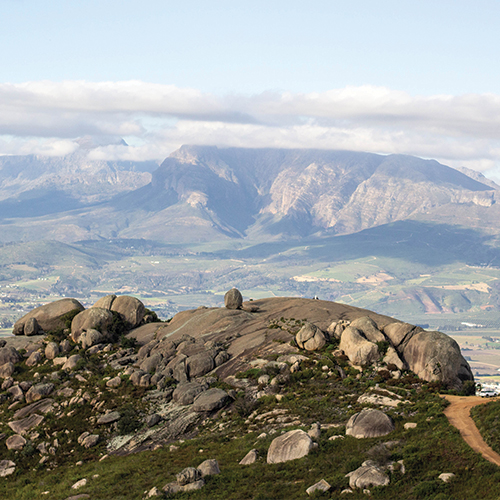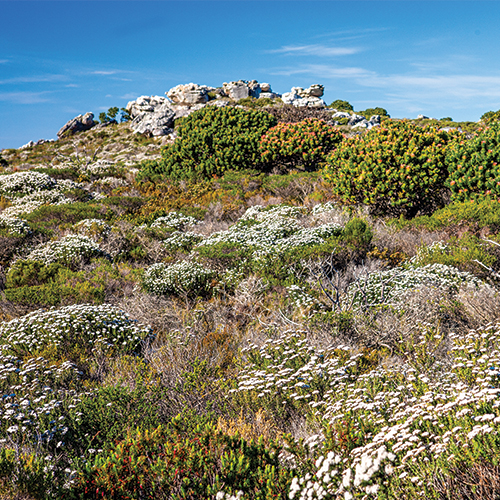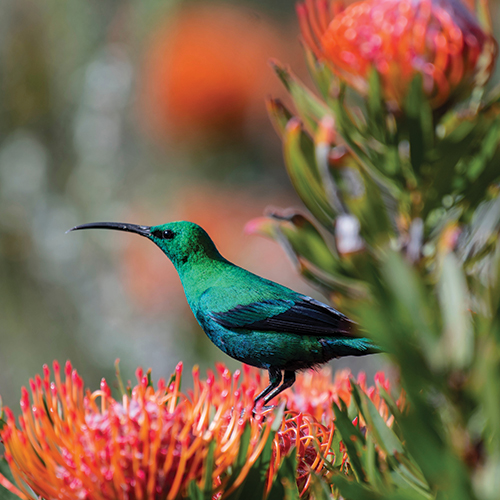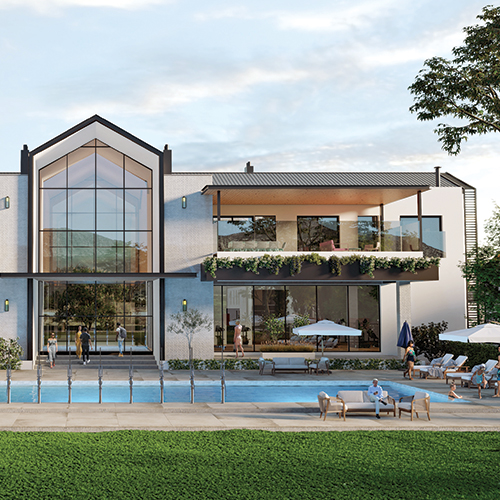Drakenzicht: The Beauty Of Nature And Luxury Living In Abundance
Drakenzicht Estate is located in the Western Cape province of South Africa, particularly within the Drakenstein Municipality near Paarl.
The highly revered estate is surrounded by some of South Africa’s most studied and biodiverse mountain ranges.
This region belongs to the Cape Winelands, renowned for its scenic vineyards and estates.
What Does The Name “Drakenzicht” Mean?
The name “Drakenzicht” combines both Dutch and Afrikaans words for “dragon” (“draken”) and “view” (“zicht”), likely referencing the majestic Drakenstein Mountains nearby or the broader Winelands region.
The Stunning Features Of Drakenzicht
Breathtaking mountain landscapes and rich ecosystems, including the fauna and flora, as well as luxurious and family-centric living benefits, are reasons to be immersed in Drakenzicht’s extraordinary setting.
The Marvellous Mountains Surrounding Drakenzicht
The mountains encircling the Drakenzicht landscape are a part of the ancient Cape Fold Belt, a geological wonder formed between 330 and 510 million years ago.
Between that time, tectonic forces folded vast sedimentary rock layers into towering sandstone ridges that formed a geological marvel and defined the very character of the Western Cape.
Unlike many mountain ranges that rise gradually from the landscape, the Cape Fold Mountains emerge suddenly from the valley floors, their steep, foothill-free slopes creating a visual contrast that is both sublime and formidable.
The region’s underlying geology tells a story of dramatic change. The formation of the Cape Supergroup rocks is closely linked with the shallow Agulhas Sea and the eventual tectonic processes that transformed deep-sea sediments into resilient sandstone.

The Groot and Klein Drakenstein Ranges
The Groot Drakenstein Mountains, also known as “Great Dragon Stone,” form a bold barrier stretching between Franschhoek and Stellenbosch. Among their many peaks stands Victoria Peak, rising to approximately 1,590 meters. This peak offers intrepid hikers panoramic views that capture the very soul of the Cape Winelands.
This range, built of hard sandstone intermingled with quartzite, has been sculpted over 300 million years by relentless tectonic pressures, giving rise to its rugged, time-worn visage. The name “Drakenstein” itself, echoing “dragon stone,” pays homage to early Dutch settlers and their mythical imaginations, evoking images of mighty dragons guarding centuries-old secrets.
In juxtaposition, the Klein Drakenstein Mountains, “Little Dragon Stone”, present a more compact yet equally imposing presence near Paarl and Wellington. These ranges flank vital routes such as Du Toitskloof Pass, where granite escarpments and dramatic ridges challenge drivers and hikers.
Whether traversing well-worn trails or marvelling at natural formations, one cannot help but feel that these mountains are as much a part of the local folklore as they are the backbone of practical infrastructure, connecting the interior with the vibrancy of the Cape Town metropolitan area.
Simonsberg: The Standalone Sentinel
Located between Stellenbosch and Paarl, Simonsberg stands out with its flat-topped silhouette. Dubbed the “Table Mountain of the Winelands,” this historical site showcases viticultural excellence.
Named after Simon van der Stel, the first Cape Colony governor, its lower slopes boast famous vineyards that have shaped the region’s reputation. In contrast, the upper areas feature sheer sandstone cliffs and pristine water pools, inviting exploration of hidden trails and rugged terrains. Simonsberg embodies the Cape’s duality, a literal and figurative high ground where nature’s beauty and human activity merge.
The Distinct Features Of Du Toitskloof, Hawequas, and Paarl Mountain
To the northwest of Drakenzicht lie the Du Toitskloof and Hawequas Mountains, whose steep corridors and towering pinnacles set a stage for outdoor adventures. At nearly 2,000 meters, Du Toits Peak is the highest mountain in the Western Cape’s Boland region and is integral to the Du Toitskloof Pass, a lifeline linking Kapstadt to the vast interior.
Downstream, the Hawequas Mountains, with their rugged trails and raw natural beauty, invite enthusiasts to breathe in the untouched wilderness.
Not far from these lies Paarl Mountain, renowned for its massive granite domes, especially the iconic Paarl Rock. This geological marvel, among the most prominent granite outcrops in the world, offers residents and visitors both recreational opportunities and an enduring symbol of regional pride.
Its sheer, weathered boulders, bathed in the glow of the Cape sun, provide a dramatic counterpoint to the lush, vineyard-clad slopes of the valley floor.

Franschhoek and Stellenbosch Ranges: The Southern Embrace
The mountain ranges bordering Franschhoek and Stellenbosch further enrich the natural tableau. As extensions of the Hottentots-Holland chain, these ranges are steeped in natural beauty and storied history. The Helshoogte and Bainskloof passes, historical engineering feats in their own right, slice through these mountains, offering travellers vistas of rolling vineyards, deep gorges, and centuries-old Cape Dutch architecture.
Together, they create a scenic embrace around the Drakenstein Valley, ensuring that regardless of one’s vantage point, the majesty of the mountains is omnipresent.
The Biodiversity Of Flora and Fauna in Drakenzicht
The mountains and valleys surrounding Drakenzicht Estate do more than intrigue the eye; they cradle one of the planet’s most unique ecosystems. Central to this environment is the fynbos biome, the crown jewel of the Cape Floral Kingdom. Declared a UNESCO World Heritage Site owing to its remarkable diversity and high endemism, the fynbos is a living, breathing testament to nature’s resilience and adaptability.
A Symphony of Flora
Fynbos vegetation is a study in understated elegance. Dominated by an array of proteas, ericas, restios, and geophytes, this shrubland ecosystem thrives in nutrient-poor soils and a Mediterranean climate marked by wet winters and dry summers.
The protea, including the regal King Protea and the delicate mountain-rose sugarbush, bursts into bloom with an exuberance that belies its harsh surroundings. These flowering giants captivate with their visual splendour and serve as crucial pollinator attractants for endemic birds such as the Cape sugarbird and the orange-breasted sunbird.
Equally fascinating are the restios, which anchor the fynbos with their fibrous, reed-like appearance, and the myriad geophytes that emerge in vibrant displays after seasonal fires. Rather than a destructive force, fire is a key agent in renewal for the fynbos, stimulating seed germination and prompting a burst of new growth with every passing season. This finely tuned natural cycle ensures life continues in bursts of colour and vitality even in adversity.

An Abundance of Fauna
Against this backdrop of flowering splendour, the mountainous terrain hosts an impressive variety of animal life, each species uniquely adapted to survive in the rocky crags and verdant valleys.
Mammalian inhabitants include the elusive Cape leopard, whose stealth and grace have never ceased to captivate wildlife enthusiasts and smaller yet equally charismatic creatures like the klipspringer, Cape crested porcupine, and Cape polecat. These mammals move deftly across the rocky outcrops, their lives intricately intertwined with the rugged topography that shelters them.
Birdlife, too, thrives in this unique environment. The skies above Drakenzicht are alive with the flurry of Cape sugarbirds, the piercing gaze of the spotted eagle-owl, and the graceful silhouettes of raptors such as the Verreaux’s eagle. Each avian species plays a crucial role in maintaining the ecological balance by facilitating pollination and seed dispersal and serving as an indicator of the region’s overall environmental health.
Reptiles feel their presence on sunlit rock faces and among the fynbos thickets. The Cape dwarf chameleon, with its remarkable camouflage and slow, deliberate movements, is a quintessential resident of these rocky landscapes.
Meanwhile, tortoises and various lizards, each adapted to the Mediterranean climate, bask on sunlit outcrops, contributing to a dynamic food chain that also includes a host of insects and invertebrates.
Even amphibians, though often more elusive, find sanctuary in this mosaic of life. Species such as the Western leopard toad and the critically endangered Table Mountain ghost frog underline the delicate balance maintained in these ecosystems.
The flora and fauna of Drakenzicht and the surrounding mountains encapsulate an evolutionary wonderland. Their existence is a powerful reminder of nature’s capacity for reinvention. Each wildfire, seasonal bloom, and migratory passage contributes to the cyclic renewal of life in an environment where every organism, no matter how diminutive, plays an essential part.
The Seasons Of Drakenzicht
Each time of year brings a distinct mood and a suite of natural phenomena that define the landscape and resonate deeply with those who call this area home.
Spring
As winter’s chill retreats, spring arrives with a surge of energy. The fynbos ignites in a riot of colours as proteas, ericas, and an array of wildflowers burst into bloom. Morning mists lift from the valley floor, and the air is filled with the vibrant calls of nesting birds.
For nature enthusiasts, spring represents a veritable feast for the senses, when the interplay between flora and fauna is most dynamic. Young animals, fresh blooms, and the renewed vigour of the landscape signal that life is an endless cycle of rebirth and promise.
Summer
Summer in the Cape Winelands is marked by warm, often intense days, sometimes soaring into the 30s. Despite the heat, the mountains remain alive with activity. Early morning and late afternoon are the most favourable times for wildlife observation.
Reptiles reach a crescendo of activity as they bask on sunlit rocks, while the aroma of dry fynbos mingles with the scent of ripening vineyards. Evenings witness a shift, crepuscular creatures, from porcupines to nocturnal birds, emerge, exploring the softened shadows of dusk.
Autumn
Autumn brings with it a gentle transformation of the landscape. As the summer heat wanes, the season’s first rains coax new green shoots from the parched earth. The valleys turn a mosaic of golds, reds, and ambers, echoing the season’s gradual cooling.
Migratory birds begin their nuanced journeys, while resident species take on a more subdued palette of hues. For Drakenzicht residents, autumn is a time of introspection, a period to enjoy long, reflective hikes amidst an environment that feels both ancient and ever-renewing.
Winter
During winter, the Cape Winelands transform under a cloak of cool, often dramatic weather. Most of the region’s annual rainfall falls during this period, and even the towering peaks are sometimes dusted with a delicate frost or even a rare sprinkling of snow.
A Lifestyle in Harmony with the Land
Beyond the science and natural beauty, Drakenzicht stands as a testament to what it means to live in genuine harmony with one’s environment. Here, modern comforts merge seamlessly with the raw splendour of an ancient landscape.
Residents find that everyday life is interlaced with nature, from working in high-tech, sunlit homes that frame majestic mountain vistas to partaking in community initiatives dedicated to conservation and sustainable living.
The estate’s planning reflects a deep understanding of the local ecology. Indigenous trees and water-wise landscaping ensure that the natural fynbos and its associated wildlife flourish, even as the hum of modern living coexists around them.
Community-led efforts, such as trail clean-ups and alien species control programs, demonstrate a commitment to preserving the delicate balance that defines the Drakenzicht environment.
For the people of Drakenzicht, every sunrise is not just a start to a new day, but a reminder of the ancient rhythms that pulse through the land, a call to protect and cherish a natural heritage as timeless as the mountains themselves.
Why Living In Drakenzicht Is The Best
Drakenzicht Estate is more than an address; it is a living narrative, a dialogue between the ancient earth and those who reside under its peaks. The majestic mountains surrounding the estate tell stories of deep-time geological upheavals, relentless natural forces, and delicate ecological balances that have evolved over millions of years.
In this rare intersection of culture, history, and nature, every rock formation, flowering shrub, and native bird chirp contributes to an ongoing saga of resilience and transformation.
For those passionate about conservation, history, and the art of living well, the Drakenstein Valley offers a unique invitation. It commands respect and inspires reverence.
With its abrupt rocky ascents, verdant pockets of fynbos, and sweeping vistas that change with the seasons, it challenges us to rethink our relationship with the natural world and recognise that modern living can, and must, coexist with the wild rhythms of the earth.
The Attractive Lifestyle Elements Of Drakenzicht
Drakenzicht’s world-class lifestyle centre brings sport and leisure to one’s doorstep. Diving into the 25m heated swimming pool or splashing around in the luxurious water park is an ideal summer day fun for the family.
Keeping one’s fitness on point can be achieved seamlessly in the Training Science TechnoGym, or the dedicated yoga and pilates studios.
Whether rallying on the padel court, shooting hoops in the basketball arena, mountain biking, jogging the scenic running track, or letting one’s furry friends play blissfully in the dog park, there’s always a way to stay active and have fun without leaving the estate.
One can savour a latte onsite at Drakenzicht Café, stock up on farm-fresh produce at local markets, or explore nearby retail hubs like Paarl Mall, Laborie Centre, Rembrandt Mall, and Drakenstein Shopping Centre.
Wandering the gorgeous vineyards of Avondale or Fairview, hiking the Paarl Mountain Trails, or treating the family to an alpaca encounter and reptile adventures at Le Bonheur are just some of the convenient Winelands experiences available.
Living at Drakenzicht means embracing sustainable luxury. Each villa features low-VOC finishes, SMEG appliances, and wood-burning fireplaces, set within stunning contemporary Cape architecture.
Drakenzicht estate’s 8 Kva solar solution, which includes a 10 kWh battery backup and on-site EV charging, assists with power maintenance during load shedding.
Lush indigenous landscaping, private gardens and water-wise design meld the biometric security, CCTV, electric fencing, and armed drone response to offer peace of mind in a beautiful, green setting.

What Makes Drakenzicht An Attraction For Every Person
Drakenzicht’s story resonates with hope, tradition, and a call to stewardship. It is a vision of how human ingenuity and natural beauty can merge to create a lifestyle that is as enriching as it is sustainable, a legacy that will safeguard this extraordinary landscape for future generations.
Whether a resident, visitor, or passionate advocate for nature, the journey through the Drakenzicht landscape leaves an indelible mark on the soul.
Drakenzicht is the ideal place to live, as it offers the ideal mix of nature and luxury in the blissful and picturesque Winelands.
